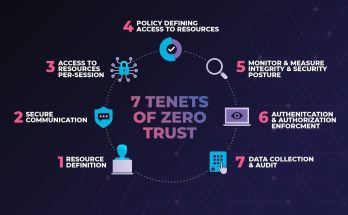## What’s the Environmental Cost of Smart Devices?
The allure of smart devices is undeniable. From thermostats that learn our preferences to voice-activated assistants that control our homes, these technologies promise unparalleled convenience, efficiency, and a touch of futuristic living. However, beneath the sleek designs and seamless connectivity lies a growing environmental footprint that often goes unnoticed. As our homes become increasingly saturated with interconnected gadgets, it’s crucial to scrutinize the full lifecycle of these devices, from their raw material origins to their eventual disposal, to understand the true environmental cost of our smart lifestyle.
The journey of a smart device begins deep within the Earth, with the **extraction of raw materials**. These gadgets are not just plastic and glass; they are intricate assemblies of rare earth elements, precious metals like gold, silver, and copper, and various other minerals like silicon, lithium, and cobalt. The mining of these materials is often an environmentally intensive process, leading to habitat destruction, deforestation, soil erosion, and water pollution. For instance, the demand for lithium, a key component in the batteries powering many smart devices, has surged, prompting concerns about the environmental impact of its extraction from brine pools or hard rock mines. Similarly, the extraction of tin, tantalum, tungsten, and gold, often referred to as “conflict minerals,” can have severe social and environmental consequences. The sheer volume of these materials required to produce billions of devices globally each year creates a substantial ecological burden long before a product even reaches the manufacturing floor.
Following extraction, the **manufacturing process** itself is energy-intensive and can involve the use of hazardous chemicals. Creating the microchips, circuit boards, displays, and batteries that form the core of smart devices requires vast amounts of electricity, much of which is still generated from fossil fuels, contributing to greenhouse gas emissions. The intricate processes of semiconductor fabrication, for example, involve numerous steps, each consuming energy and often generating specialized waste streams. The assembly lines, while increasingly automated, still rely on a complex global supply chain that incurs significant transportation emissions as components crisscross continents before reaching their final assembly points. Around 80% of the greenhouse gas emissions over the lifetime of a typical digital device are attributed to its production phase, underscoring the significant upfront environmental cost.
Once manufactured, the environmental impact shifts to the **usage phase**. While many smart devices promise energy savings (e.g., smart thermostats optimizing heating/cooling), the cumulative effect of countless devices constantly connected and drawing power can offset some of these benefits. Even in standby mode, smart speakers, smart plugs, and various hubs consume “vampire energy.” The constant data exchange between devices and cloud servers also requires vast data centers, which themselves are enormous consumers of electricity and often water for cooling. While individual device energy consumption might seem small, the sheer proliferation of smart home gadgets means the collective energy demand can be substantial. Studies show that smart home technologies can indeed reduce general energy use by 15-25%, with smart appliances recording the highest reduction, but this benefit is realized only when implemented strategically and effectively.
However, the most pressing environmental concern associated with smart devices is arguably their **end-of-life management: electronic waste (e-waste)**. Smart devices often have shorter lifespans than traditional electronics, driven by rapid technological obsolescence, frequent software updates that older models can’t handle, and consumer desire for the “latest and greatest.” This leads to a massive and growing global problem. In 2022 alone, a record 62 million tonnes of e-waste were produced worldwide, with less than a quarter (22.3%) being properly collected and recycled. This figure is projected to rise to 82 million tonnes by 2030.
When smart devices are discarded, they contribute to this toxic tide. Their compact size and integrated components, including batteries, sensors, and microchips, make disassembly and recycling incredibly challenging. Many devices are designed with sealed units and proprietary components, actively hindering repairability and extending their useful life. The hazardous materials contained within – heavy metals like lead, mercury, and cadmium, along with flame retardants – can leach into soil and water if devices are simply landfilled, posing severe risks to ecosystems and human health. The informal recycling practices prevalent in some parts of the world, which involve burning e-waste to extract valuable metals, release highly toxic pollutants into the air, impacting local communities and contributing to global air quality degradation.
Addressing the environmental cost of smart devices requires a multi-faceted approach. On the industry side, this involves embracing **circular economy principles**. This means designing products for durability, repairability, and ease of disassembly from the outset. It calls for using recycled materials in manufacturing, establishing robust take-back programs, and investing in advanced recycling technologies to recover precious resources. Extended producer responsibility, where manufacturers are held accountable for the entire lifecycle of their products, is also crucial.
For consumers, the responsibility lies in making informed choices: researching a device’s longevity, repairability, and the manufacturer’s sustainability practices before purchase. Extending the lifespan of devices by repairing them when possible, buying refurbished products, and ensuring proper recycling through certified e-waste facilities when a device truly reaches its end of life can significantly mitigate its environmental impact.
In conclusion, while smart devices offer undeniable benefits to our daily lives, their environmental cost is a complex and substantial issue spanning raw material extraction, energy-intensive manufacturing, continuous energy consumption during use, and a burgeoning e-waste crisis. Recognizing this footprint is the first step. By demanding more sustainable practices from manufacturers and adopting more responsible consumption habits ourselves, we can collectively work towards a future where the convenience of smart technology doesn’t come at an unsustainable cost to our planet.



